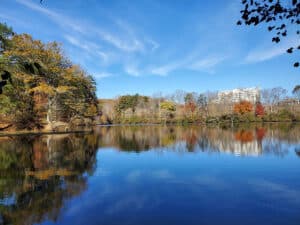
Enter lake dyes, aquatic-approved colorants that transform a lake’s appearance, providing options ranging from tranquil blues to reflective blacks. One of the advantages of using lake dyes is their role in controlling the growth of aquatic weeds and algae. These troublesome plants thrive in sunlight, much like terrestrial vegetation relies on sunlight for photosynthesis. By darkening the water’s surface and limiting light penetration, lake dyes effectively create a barrier against excessive plant growth. This not only enhances the visual appeal of the lake but also supports the overall health of the aquatic ecosystem.
It’s important to note that lake dyes are distinct from herbicides and should not be considered as replacements for targeted treatments. Instead, they serve as valuable tools in the broader strategy of lake management. However, the effectiveness of lake dyes can be influenced by factors such as lake size and water flow. Larger lakes with higher water flow might experience different outcomes than smaller bodies of water. The decision to introduce lake dyes into a lake management program should be carefully considered along with expert advice. Each lake is unique, and its response to such interventions can vary widely. If you’re curious about how lake dyes might fit into your lake’s management strategy, don’t hesitate to contact us. The world of lake colors is as diverse as the lakes themselves, and discovering the right balance of natural and artificial influences can create a stunning experience.


